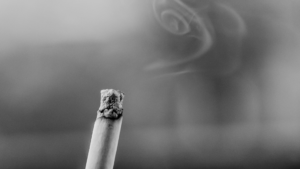Invisible, radioactive and deadly: the probability of dying from radon is twice as high as that of dying from road traffic accidents, as it can cause the worst of all types of lung cancer.
Mitigation only through constant monitoring (as it fluctuates greatly) and ventilation.
- >300 Bq/m3
- 151 - 300 Bq/m3
- 0 - 150 Bq/m3
Origin
Radioactive gas that rises from underground through leaks in buildings
Effects
Can cause lung cancer
Improvement measure(s)
Increase air exchange rate
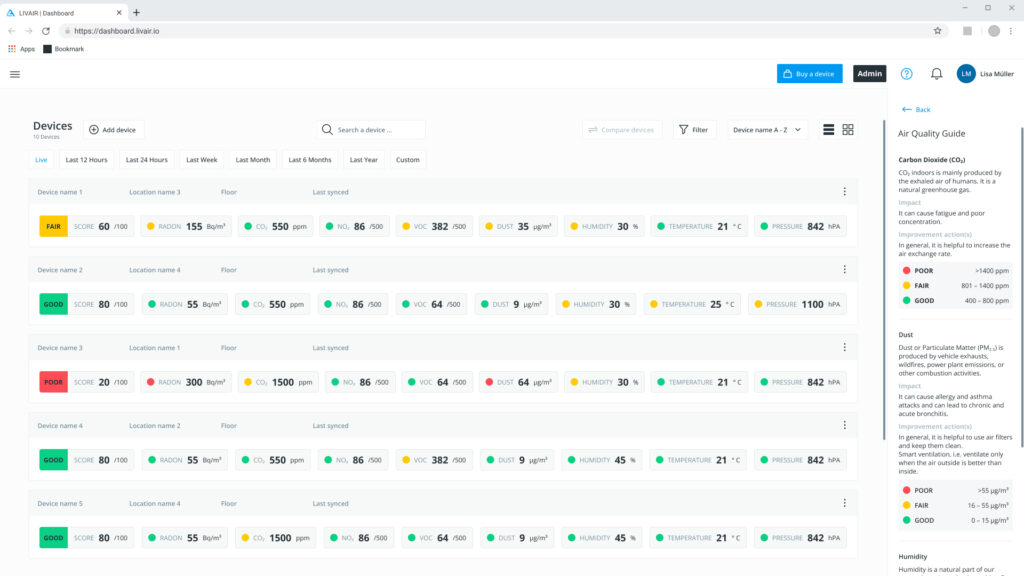

You can find all your real-time results in our dashboard with integrated air quality guide
The Air Quality Guide (AQG) is designed to help users quickly and easily classify their measured air values on a scale.
It will inform you about the origin of the relevant air factor, what effects it can have on your health and well-being and give you some general improvement measures that can work if you don't have complex problems.
LivAir One - the most intelligent air quality monitor
The LivAir monitor is equipped with a variety of sensors. The centerpiece is our patented radon sensor.
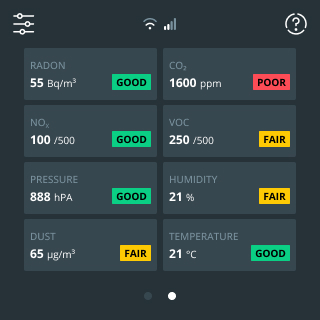
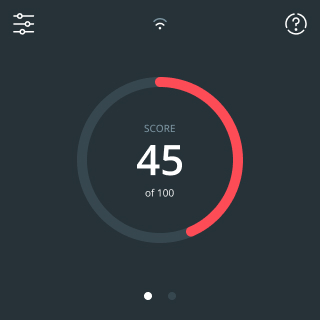
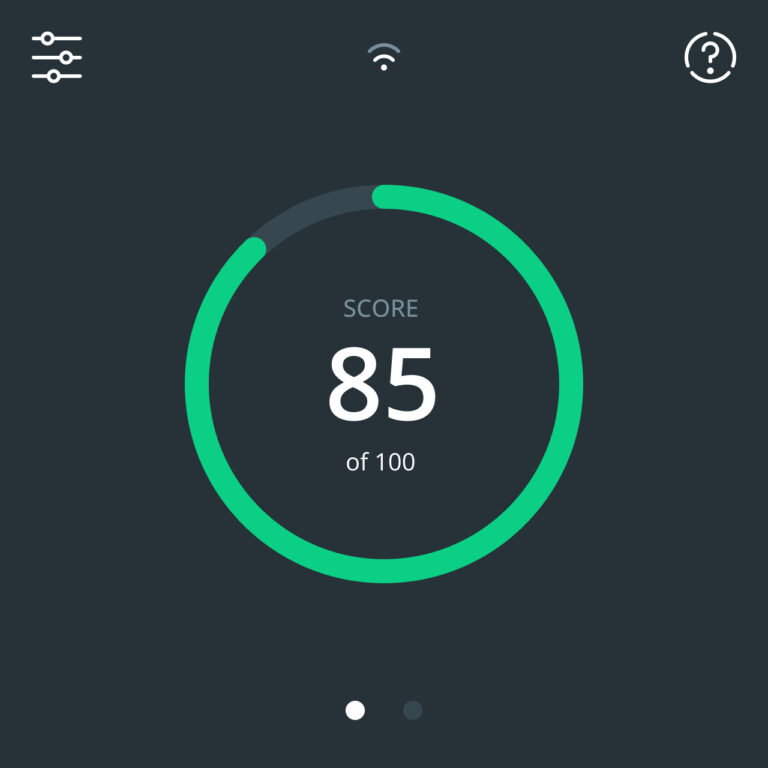
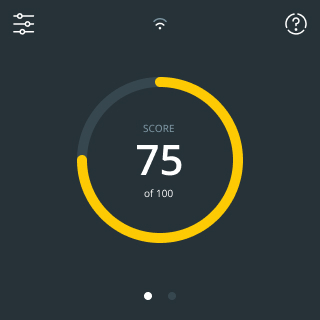
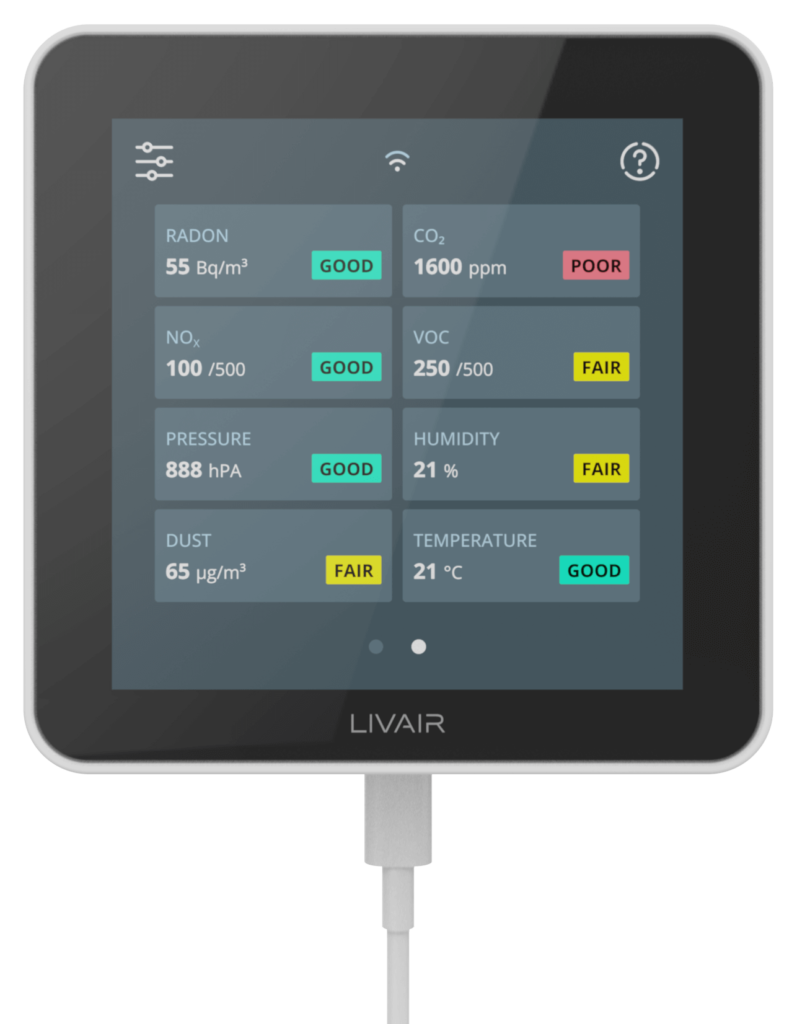

Make the invisible visible
and book your consultation now!
Take a look at how Livair ensures better indoor air.
- invest only 20 minutes of your time
- completely non-binding
- 100% Added value for you
Find out more about our other built-in sensors
Why is radon so dangerous?
When radon is mentioned as a hazardous substance, many homeowners think that the main danger is radon itself. But even more dangerous than the radon itself are the secondary products that are formed when the radioactive gas decays.
The decay of radon produces secondary products that are also radioactive. The by-products are isotopes of lead, bismuth and polonium - elements with a short half-life. If dust particles and water droplets (aerosols) are present in the air, the radioactive particles attach themselves to them. When breathing, these then enter the lungs, which promotes the development of lung cancer.
How does radon get indoors?
Radon in buildings can arise from various Sources originate. The majority of radon comes from the soil air beneath buildings, which can contain high concentrations of radon. The more radium-226 (part of the natural decay series of uranium-238, uranium-235 or thorium-232) is present in the soil, the higher the "rising" radon concentrations can be. Radon can also enter buildings via drinking water, but this is rather unusual in normal households. The final source of radon is building materials containing radium-226. The higher the specific activity of the radium in the building materials, the greater the amount that the building materials contribute to the total radon exposure in a building.








